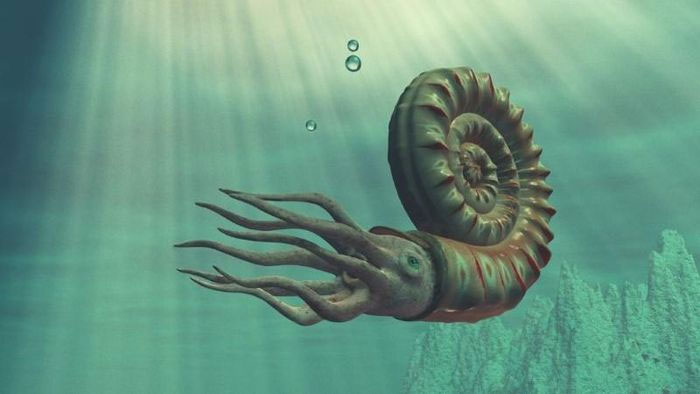Giant sea creatures appeared in the Atlantic Ocean 80 million years ago
About 80 million years ago, giant sea creatures belonging to the subclass Asteraceae appeared in the Atlantic Ocean, a new study says.
These creatures belong to the subclass Asteraceae and belong to the group of shellfish that became extinct about 66 million years ago . The largest Asteroid fossil ever discovered belongs to the species Parapuzosia seppenradensis . The fossil was found in Germany in 1895, with a giant shell 5.7 feet (1.7m) long.

The Crested Creatures may have faced evolutionary pressure.
Although discovered more than a century ago, but, since then, very few fossils of Daisies of similar size have been discovered. This has raised big questions about how and when P. seppenradensis evolved to such impressive size.
In a new study published November 10 in the journal PLOS One, scientists examined 154 Asteroid fossils. It includes a number of historical specimens and more than 100 newly discovered fossils collected from England as well as Mexico.
Based on this analysis, they found that P. seppenradensis appeared on both sides of the Atlantic Ocean about 80 million years ago. They likely evolved from a smaller species called Parapuzosia leptophylla . The size of this species is only about 3.2 feet (1m).
The team traveled to a site about 25 miles (40 km) from Piedras Negras in Northern Mexico. They discovered 66 specimens of Parapuzosia, including the giant P. seppenradensis and the smaller P. leptophylla. The fossils range in width from 0.3 - 4.8 feet (0.1 - 1.48m). They represent different stages in the Asteraceae development cycle.
In classifying the different Parapuzosia specimens, the team also dated the sediments from where the specimens appeared. They found that the samples of P. leptophylla date from the Santonian stage (86.3 million - 83.6 million years ago).
Meanwhile, P. seppenradensis appeared in younger sediments, dating back to 83.6 million - 72.1 million years ago. In the early Champagne period, fossils were discovered that were getting larger and larger.
Fossils of similar circumference have also been found in the Atlantic Ocean. Analyzing the samples, the team found that these giant creatures appeared to appear at the same time on both sides of the Atlantic Ocean.
'There must have been some connection between the populations of both sides. Because they represent an evolutionary process at the same time , ' said author Christina Ifrim, a researcher at the Bavarian Natural History Collection (Germany).
Scientists surmise that these Crested Creatures may have faced evolutionary pressure to avoid being eaten by the Blue Dragon. However, there is no direct evidence that the Dragonfly hunted P. seppenradensis.
- Discover new creatures under the Atlantic Ocean
- The Atlantic will be
- Water in the Indian Ocean flows into the Atlantic Ocean
- 10 giant animals on the ocean floor
- Giant mouse 'occupies' the island in the Atlantic Ocean
- 65 interesting things about jellyfish (1)
- Warning of giant storms on the Atlantic Ocean
- Detection of 1.5 million new marine organisms
- North Atlantic ocean currents heat the Arctic
- The highest wave in the world, more than 6-storey house in the Atlantic Ocean
- The ocean is hot like 'oil cauldron' under dinosaurs
- The giant bird once dominated the Antarctic sky 50 million years ago
 Discovered an ancient centipede fossil 99 million years old
Discovered an ancient centipede fossil 99 million years old Discovered bat-like dinosaurs in China
Discovered bat-like dinosaurs in China Discovered a 200-year-old bronze cannon of the coast
Discovered a 200-year-old bronze cannon of the coast Discover 305 million-year-old spider fossils
Discover 305 million-year-old spider fossils